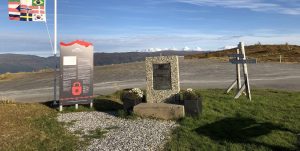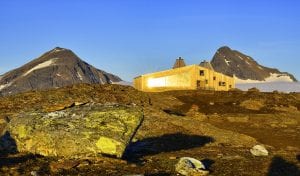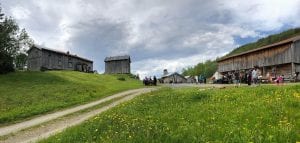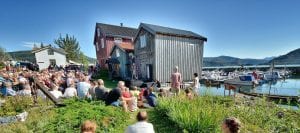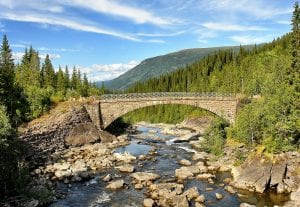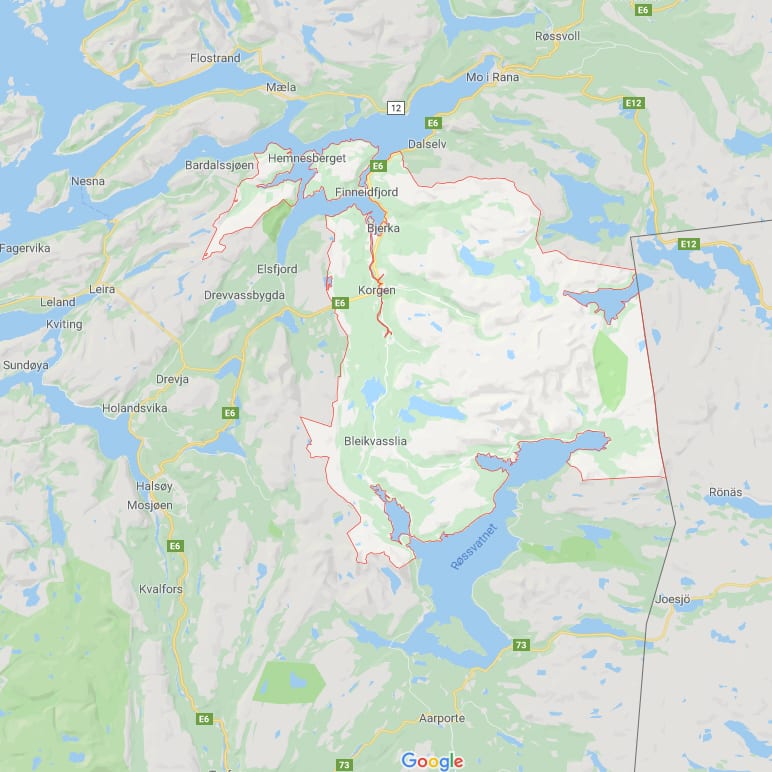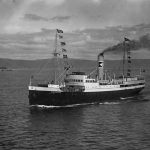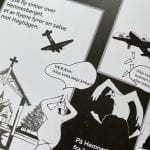The Hurtigruten coastal steamer SS Nordnorge, which was moored at one of the quays, suffered several direct hits and sank. This shipwreck, resting at a depth of 280 metres, was photographed for the first time in the spring of 2021.
By 2020, 80 years had passed since those dramatic war events occurred in Hemnesberget (see separate article). To this day, visitors can see evidence of World War II here. In fact, Hemnesberget is one of the few villages and towns in Norway where a significant portion of the buildings raised during the post-war reconstruction period are still standing. Near the village, you can also see several bunkers and fortified positions that date back to the war. Preparations are underway to make one of these available to the public.
Today, the SS Nordnorge rests on the seafloor a couple of hundred metres offshore from the quay called Præstengkaia. Its final resting place, 280 metres below the surface of the sea, has been undisturbed for over 80 years. Its exact location was found only as recently as January of 2020. In the spring of 2021, subsea experts from Visit Plura and Scansub/Seløy Undervannsservice managed to guide an unmanned ROV to take photos of the ship.
The story of this Hurtigruten coastal steamer is an important chapter in Norway’s World War II history.
In May 1940, the SS Nordnorge was in Trondheim for maintenance. The ship was requisitioned by the German forces that had invaded and were occupying Norway. On May 8, under a German flag, the ship sailed out the Trondheimfjord carrying 200 elite German and Austrian mountain troops. Norway’s legitimate authorities and the command of the Norwegian Resistance feared these German troops would be used to ambush their forces that were still fighting in northern Norway, and they informed the Allies commanders of their concerns.
On 10 May, the SS Nordnorge arrived at Hemnesberget and docked at a quay in the village centre. Immediately, fighting broke out between the German arrivals and the British forces stationed at Hemnesberget.
Nevertheless, in the course of the next hour, the Germans managed to land most of their soldiers and supplies before the coastal steamer was attacked by the British warships HMS Calcutta and HMS Zulu. These vessels had been sent and ordered to sink the SS Nordnorge.
After suffering heavy shelling by SS Nordnorge, the MS Zulu successfully launched a torpedo and got a direct hit on the coastal steamer, causing it to sink immediately. Its moorings tore away part of the quay as it sank.
The British forces in Hemnesberget resisted the German invaders fiercely, and street battles waged from house to house. Planes bombed and fired at targets on the ground, hand grenades flew through the air and machine guns rattled. At midnight, the remaining British soldiers were finally forced to withdraw. The Germans had seized Hemnesberget and now controlled the village.
Casualties included two civilians and eight Scottish soldiers who were killed, and a similar number of Austrian and German soldiers. Fires raged and destroyed sixteen houses.
A couple of days later, Allied warships entered the fjord and subjected Hemnesberget to sustained cannon fire, reducing much of the village to rubble. All in all, 150 houses were reduced to ash and rubble during those fateful days of World War II.
German forces were also landed at Sund by seaplane, and in the days that followed the Germans advanced towards a neighbouring village, Finneidfjord. At Sund and several places en route to Finneidfjord, there were fierce fighting and casualties. At midnight on the night of 15 May, the Allied forces withdrew from the municipality and retreated northward.
Several Norwegian books have been written about the World War II events in Hemnes, including one by Torstein Finnbakk. You can read more by clicking the link to the right. Here you can also read about the Blood Highway across Korgfjellet. The Germans forced prisoners of war to build this road, with heavy loss of life, hence the name.

